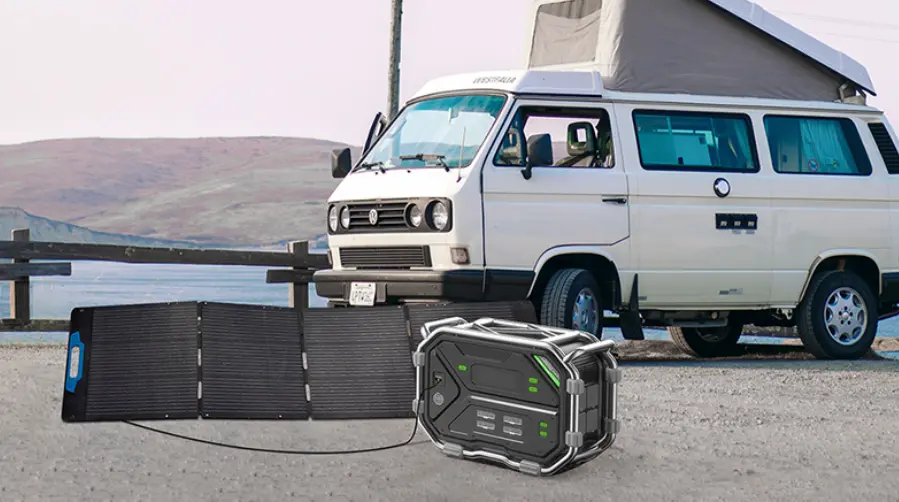
A solar generator is a device that converts sunlight into electrical energy, which can then be used to power various devices or stored for later use. Here’s a breakdown of how it works:
Components
Solar Panels: These are the primary component that captures sunlight and converts it into direct current (DC) electricity through the photovoltaic effect.
Charge Controller: This regulates the voltage and current coming from the solar panels to ensure that the batteries are charged efficiently and safely.
Battery Storage: The generated electricity is stored in batteries so that it can be used when sunlight is not available (e.g., during the night or on cloudy days).
Inverter: This converts the stored DC electricity in the batteries into alternating current (AC) electricity, which is the standard form used by most household appliances and devices.
Process
Sunlight Absorption: Solar panels absorb sunlight and convert it into DC electricity.
Regulation: The charge controller manages the flow of electricity from the solar panels to the batteries, preventing overcharging and prolonging battery life.
Storage: The generated electricity is stored in batteries for later use.
Conversion: When you need to use the stored electricity, the inverter converts the DC electricity from the batteries into AC electricity.
Usage: The AC electricity is then used to power your devices and appliances.
Key Points
Efficiency: The efficiency of a solar generator depends on the quality of its components, particularly the solar panels and batteries.
Portability: Many solar generators are designed to be portable, making them ideal for outdoor activities, emergency backup, or off-grid living.
Environmental Impact: Solar generators provide a clean and renewable source of energy, reducing reliance on fossil fuels and minimizing environmental impact.
Overall, a solar generator is a versatile and eco-friendly solution for generating and storing electricity.



